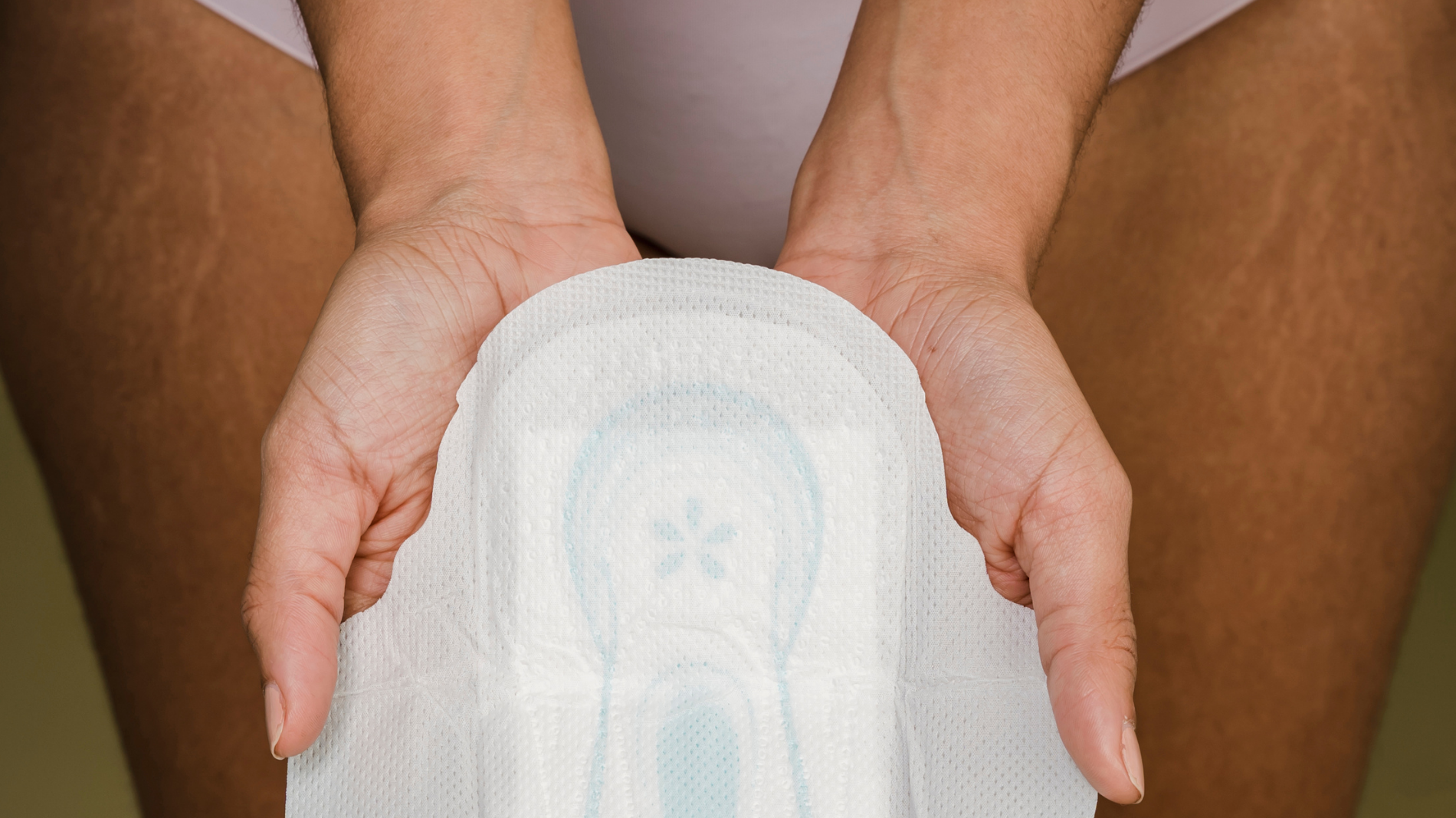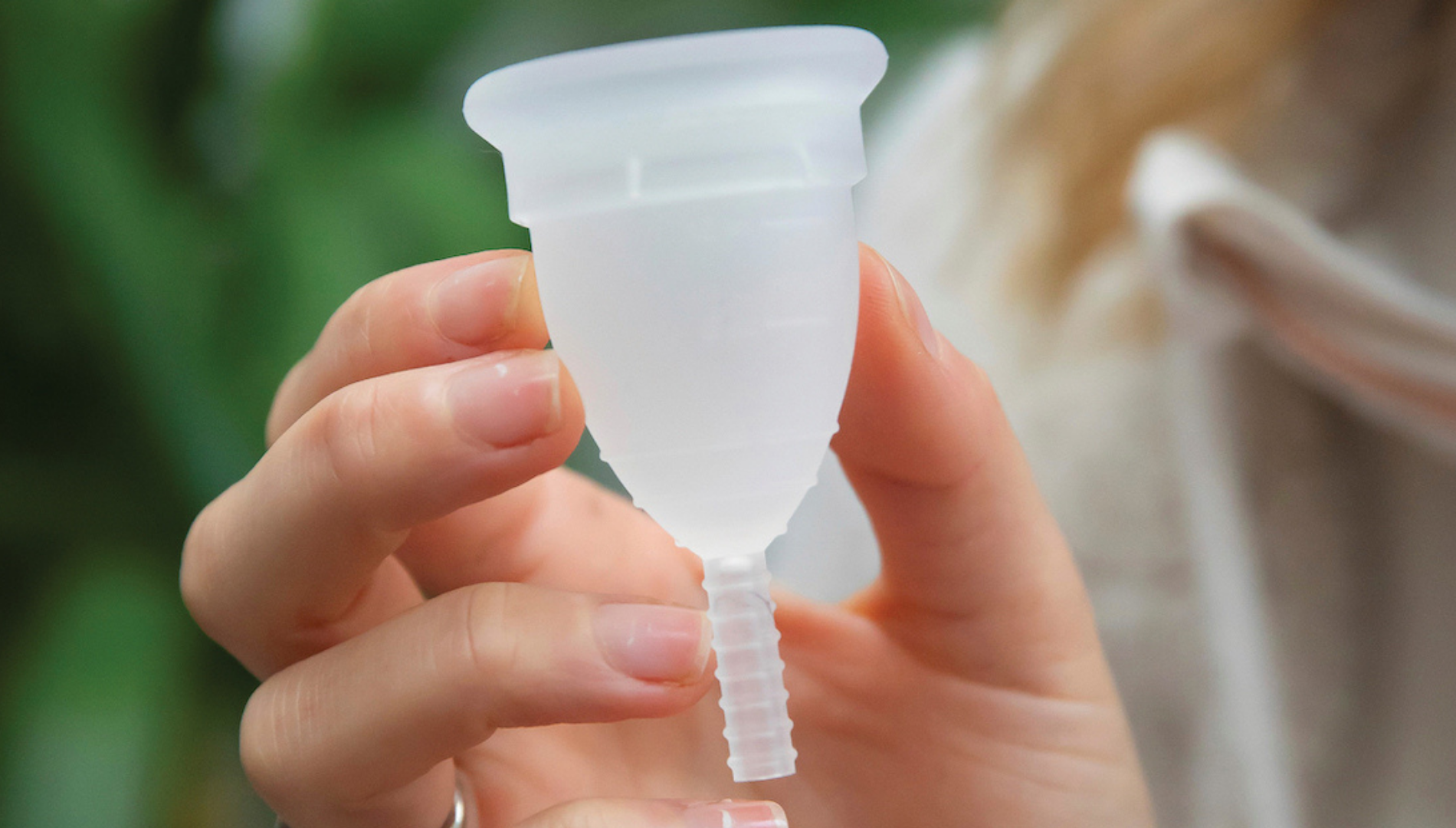It's safe to say that you have an intimate relationship with your period products. If you're suffering with a rash from a sanitary pad, you've come to the right place. Here's everything you need to know about pad rash, what causes it and how to avoid it:
What is pad rash and how does it affect sensitive skin?
Putting it simply, pad rash (also known as contact dermatitis) is a skin irritation or rash that can occur as a result of prolonged contact with a pad. Individuals with sensitive skin are more prone to developing pad rash. The rash is usually red, itchy, and bumpy and can appear on the skin surrounding the vaginal area.
What causes skin irritation from a pad?
Pad rash is usually caused by excessive friction or sweat whilst wearing a pad. Most pads on the market are made from unnatural materials that aren't breathable and include nasty chemicals like bleach & plastic. You know it can get pretty hot and sticky during your period, mix that with a pad that just sits there getting hotter and stickier as the day goes on, it's the perfect combination for an irritating rash to form. Pad rash is similar to diaper rash, as both conditions share similar causes such as moisture and friction. Just as it is important to treat diaper rash by keeping the area clean and dry, similar steps should be taken to manage pad rash effectively.
Some of the ways you can get pad rash include:
-
Allergic reaction - some people may have an allergic reaction to the adhesive or materials used in some types of pads, so it's important to always know what's in your pads.
-
Moisture - prolonged exposure to moisture from menstrual blood or sweat is similar to the effects of wet or soiled diapers in causing irritation and lead to pad rash.
-
Yeast or bacterial infections - if you have a yeast or bacterial infection, pads can trap the moisture and create a warm environment that allows the infection to thrive, leading to a rash.
-
Chafing - prolonged wearing of pads can cause chafing and irritation of the skin.
-
Changing pads frequently - it is important to change pads frequently to prevent pad rash, similar to how changing soiled diapers can prevent diaper rash.
Keeping the area clean and dry is crucial to prevent both pad rash.
Symptoms of Pad Rash
Pad rash can manifest in various ways, making it essential to recognise the symptoms early. Common signs include redness, itching, and inflammation of the skin. You might notice that the affected area becomes tender to the touch, and in some cases, small bumps or blisters may develop. If the rash is severe, it can lead to skin cracking and even bleeding.
It's crucial to be aware of more serious symptoms that require medical attention. If you experience severe pain or discomfort, increased redness or swelling, pus or discharge, fever, or difficulty urinating, it's time to consult a healthcare professional. Additionally, individuals with weakened immune systems or those taking certain medications may find themselves more susceptible to developing pad rash.
How can I treat pad rash?
-
Keep the affected area clean and dry, similar to how you would treat diaper rash. You can also apply a soothing cream or ointment that you can purchase over the counter. Keeping the area clean and dry is essential for treating pad rash.
-
Avoid materials that cause irritation, switching to pads made of breathable materials. Avoid using baby wipes on sensitive areas like the vulva due to the potential for irritation; instead, use plain water and reusable intimate wipes for maintaining cleanliness.
-
Ensure you're changing pads frequently to help prevent pad rash.
-
If you're suffering every time you wear a pad or the rash is incredibly painful, make sure you see a medical professional who should be able to prescribe specific medication.
Medicated Treatment Options
When it comes to treating pad rash, there are several medicated options available that can help soothe and heal irritated skin. Over-the-counter (OTC) treatments are often the first line of defense, but in some cases, a prescription may be necessary. Here are some common medicated treatments for pad rash:
-
Topical creams or ointments: Products containing zinc oxide, petroleum jelly, or aloe vera can create a protective barrier on the skin, reducing inflammation and discomfort.
-
Hydrocortisone cream or ointment: This can help reduce inflammation and itching, providing much-needed relief.
-
Antifungal creams or ointments: If a fungal infection is present, antifungal treatments can help eliminate the infection and soothe the skin.
-
Antibiotic creams or ointments: For bacterial infections, antibiotic treatments can be effective in clearing up the infection and promoting healing.
It's essential to consult with a healthcare professional before using any medicated treatment for pad rash, especially if the rash is severe or persistent. They can recommend the best course of treatment and provide guidance on how to use the medication effectively. Just like treating diaper rash, the right medicated treatment can make a significant difference in managing pad rash.
How to avoid pad rash with organic cotton pads
Make the swap to our pads, they're breathable, hypoallergenic nd contain zero bleach, petroleum plastic or synthetics.
-
Avoid using scented or deodorant pads.
-
Make sure you change pads frequently.
-
Think about swapping to reusable period pants they're designed to work just like your regular undies and can be worn for up to 10 hours!
Alternative Products and Materials
If you frequently experience pad rash, it might be time to consider alternative products and materials that are gentler on your skin.
-
Mooncup pads: Switching to our pads can be a game-changer. These pads are made with a 100% organic cotton top sheet and are free from chemicals like bleach and plastic, making them a safer option for sensitive skin.
When using alternative products and materials, it's essential to follow proper hygiene and care instructions to prevent the spread of infection and promote healing. By making these small changes, you can significantly reduce the risk of pad rash and keep your skin comfortable and healthy.
When to Consult a Doctor
Knowing when to seek medical advice is vital for managing pad rash effectively. If you experience any of the severe symptoms mentioned above, it's essential to consult a doctor for a proper diagnosis and treatment plan. Those with a history of skin conditions, such as atopic dermatitis or eczema, may be more prone to pad rash and should be particularly vigilant.
If you've tried self-care measures like keeping the area clean and dry, switching to breathable pads, and changing pads frequently, but the rash persists or worsens, it's time to seek further guidance from a healthcare professional. Signs of infection, such as increased redness, swelling, or pus, also warrant immediate medical attention. If you're unsure about the cause of the rash or how to treat it, don't hesitate to consult a doctor for personalised advice.
Diaper Rash: A Related Condition
Diaper rash is a common condition that shares many similarities with pad rash. Understanding these connections can help you better manage and prevent skin irritations. Here are some related conditions to be aware of:
-
Atopic dermatitis: This chronic skin condition is characterized by dry, itchy, and inflamed skin. Individuals with atopic dermatitis may be more prone to developing pad rash due to their sensitive skin.
-
Allergic reaction: Some people may experience an allergic reaction to certain materials or substances in pads or diaper creams, leading to skin irritation and rash.
-
Bacterial infection: When the skin is broken or compromised, a bacterial infection can occur, exacerbating the rash and making it more difficult to treat.
-
Sensitive skin: Individuals with sensitive skin are more likely to develop pad rash due to irritation from certain materials or substances.
If you experience persistent or severe diaper rash, it's essential to consult with a healthcare professional to rule out any underlying conditions and develop an effective treatment plan. By understanding the related conditions and taking proactive steps, you can better manage and prevent pad rash and other skin irritations.
Blog disclaimer
Our blog is intended to share information and ideas around periods, health, and sustainability. While we do our best to keep content accurate and up to date, things can change over time. The information here is not intended as medical advice — for any health-related concerns, please consult a qualified healthcare professional. For more information on our claims, please see our Claims Page, and for the most up-to-date product information, please visit our Product Pages.






1 comment
I’ll try anything.